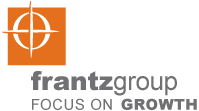 The purpose of named account profiling is to gather information about a specific set of accounts to enable the sales and/or marketing team to formulate an access strategy.
The purpose of named account profiling is to gather information about a specific set of accounts to enable the sales and/or marketing team to formulate an access strategy.
Each profile project is unique as to the type of information collected. Generally, it’s a mixture of key contacts, reporting relationships, priorities, challenges, buying decision process, key goals, trigger events or opportunities, competitive information and status. Penetrating large accounts is difficult because there are many buying influences, decision making processes are complex and often distributed across locations/divisions. Large organizations tend to have tightly defined buying cycles, and it is important for a vender to become known to the buyer early in the buying cycle to provide an opportunity to influence the buying process. Identifying not only the relationships, but inventory, assets, active projects, and potential projects for the following year, can help your company position itself for an ideal customer relationship.
Profiling large accounts requires a significant amount of probing and time. It typically involves a combination of web research and phone calls, verifying contacts, responsibilities, active projects and potential projects, as well as determining what types of hardware and software assets may exist within the organization now, as well as any service contract expiration dates. This information can allow your reps to be highly productive when approaching these large accounts. Frantz Group can take on this burden so your sales team can focus on what they do best, selling.
If you don’t have a set of target accounts, we can use profiling to help you score accounts so that you can assign sales and marketing resources based on propensity to buy. Based on scoring results, additional data can be purchased that better meets your criteria, effectively finding more organizations that fit your ideal buyer profile. The typical program will start based on available data elements, and follow a logical path (revenue based, industry based, etc), and as key scoring elements are obtained, new directions can be charted for the program.
Related topics:
ERP Lead Generation
B2B Demand Generation
B2B Lead Generation

